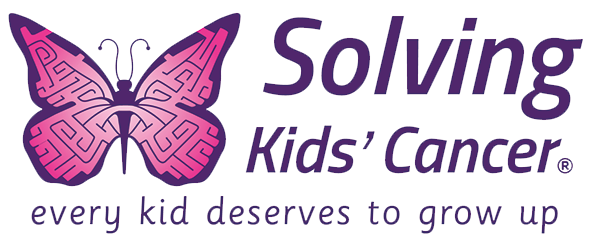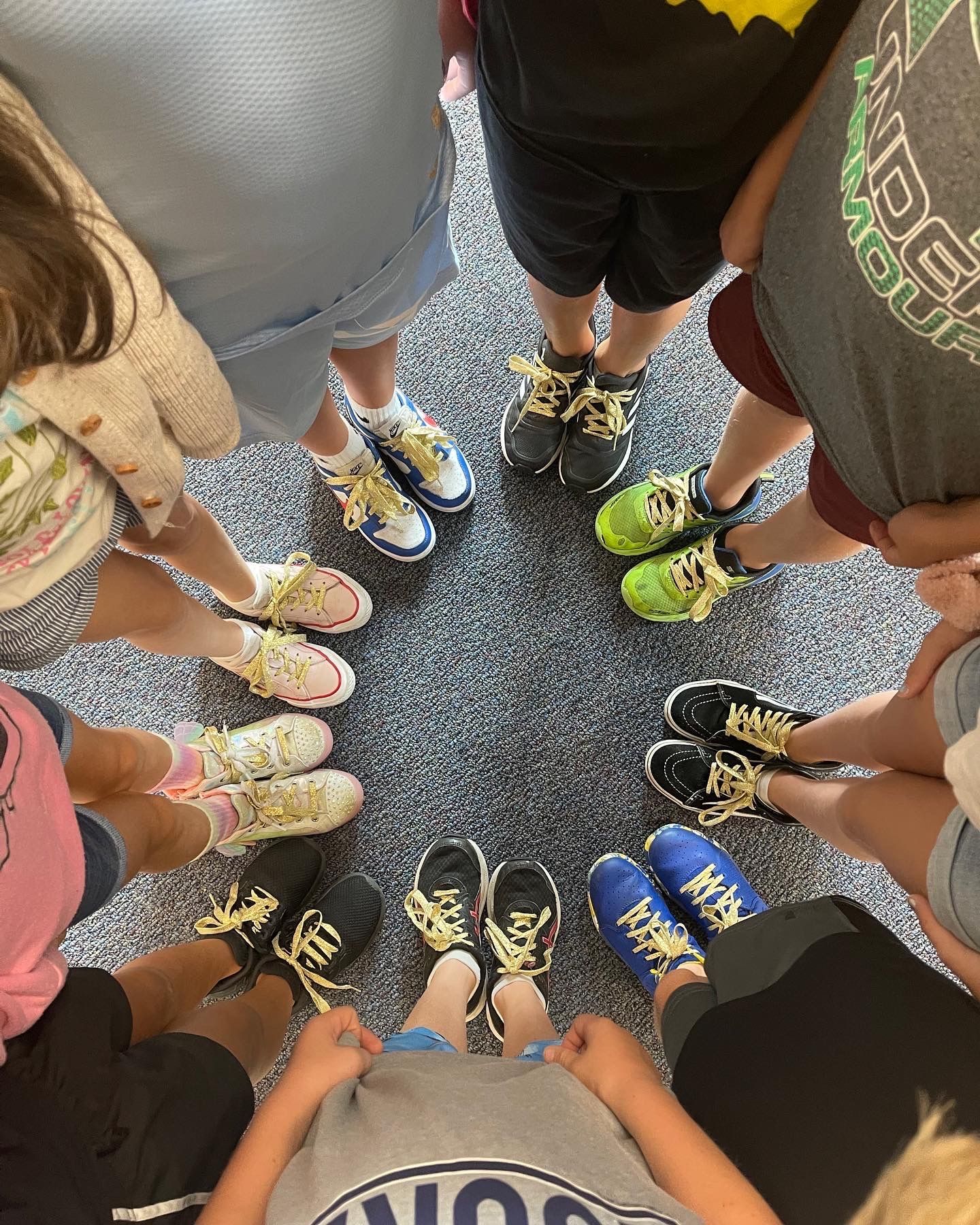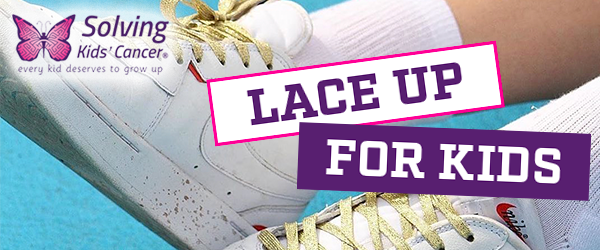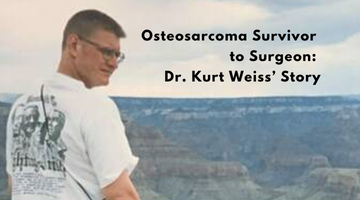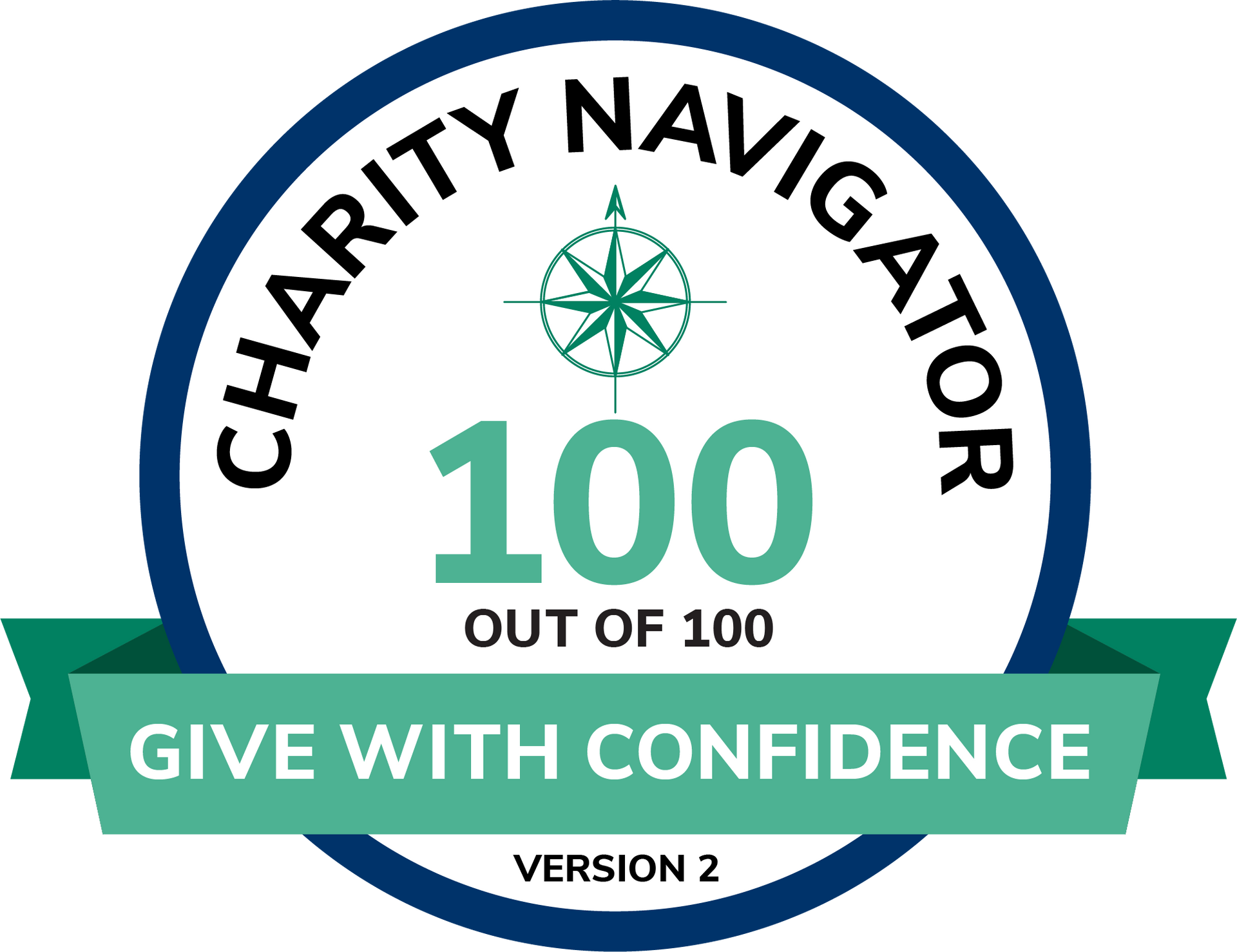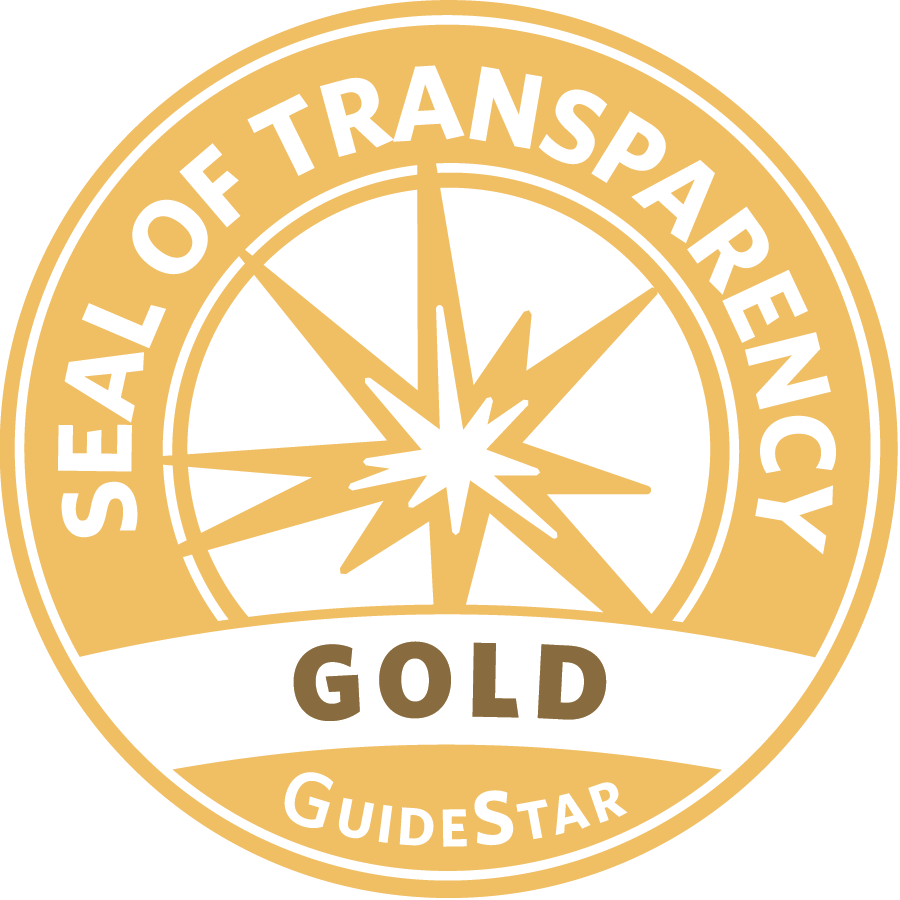News & Views
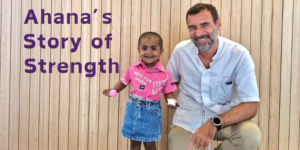
Ahana’s Story of Strength with High-Risk Neuroblastoma Every day, over 1,000 children worldwide are diagnosed with cancer,1 and for many families, that diagnosis means facing an uncertain future. At just 20 months old, Ahana was diagnosed with a rare and aggressive cancer that had already spread through her small body. Her family’s search for life-saving childhood cancer treatments led them from South Africa to Spain and possibly toward a clinical trial in New York. Ahana’s journey shows the importance of supporting organizations like Solving Kids’ Cancer, which works to find, fund, and advocate for advanced treatments that give hope to families fighting against tough-to-treat rare pediatric cancers.

Lace Up for Kids: Your Impact on Childhood Cancer Research At Solving Kids’ Cancer, our mission has always been driven by hope — hope for better treatments, hope for breakthroughs, and most importantly, hope for every child fighting cancer. This year’s Lace Up for Kids campaign was nothing short of inspiring. Together, we’ve raised over $264,000 across the entire campaign, funding innovative childhood cancer research and providing more treatment options for children in need. From coast to coast, nearly 4,000 participants have stepped up to lace up their gold shoelaces and make a difference. Whether it was through schools, sports teams, or community groups, the show of support has been overwhelming throughout the years. Over 7,823 donations have been made to accelerate new treatments, and the hashtag #CareWearShare has been used 13,864 times, spreading the message far and wide!

Jacob’s Journey: A Childhood Cancer Survivor’s Story Every battle has its heroes, and among the bravest are young children like Jacob Mozer, who faced stage 4 high-risk neuroblastoma when he was barely old enough to walk. Diagnosed at only 16 months old, Jacob’s early years were filled with constant medical appointments and intense treatments. Despite these challenges, today, Jacob is a shining example of the remarkable progress in pediatric oncology. He’s not merely surviving; he’s thriving as a pharmacy resident, driven to give back to the medical community that gave him a second chance at life. During National Cancer Survivors Month this June, we honor and celebrate fighters like Jacob who have battled cancer and emerged stronger. This month also serves to amplify the conversation about pediatric cancer survivorship and push for vital research that continues to save lives. Solving Kids’ Cancer (SKC) plays an essential role in this effort, supporting children like Jacob by funding crucial clinical trials that enhance survival rates and improve the quality of life for those fighting fatal childhood cancers.

Trailblazing Treatments for Pediatric Brain Tumors Picture a fortress built to guard precious treasure but accidentally also keeps out the very allies it needs in a time of crisis. This is the challenge faced by medical researchers when dealing with the brain’s natural defense — the blood-brain barrier — especially in children with brain tumors. At Columbia University Medical Center, Dr. Luca Szalontay is leading the charge to breach this fortress with groundbreaking approaches. Recently, Dr. Timothy Cripe from Solving Kids’ Cancer’s podcast, This Week in Pediatric Oncology (TWIPO) , interviewed Dr. Szalontay to delve deeper into these innovative treatments. This Brain Tumor Awareness Month, we’re shining a light on these important advances in treating children’s cancer. Understanding the Challenge Treating pediatric brain tumors like diffuse midline glioma (DMG) is especially tough because of the brain’s own protective shield, known as the blood-brain barrier. This barrier keeps out most chemotherapy drugs as well as large molecules, like antibodies, making it hard to treat the tumors effectively. Dr. Szalontay describes the dilemma: “Our field hasn’t been able to advance as quickly as it has with leukemias or other solid tumors because the drugs don’t penetrate the brain efficiently.” She adds on the nature of this blood-brain barrier, “It’s evolutionary, very important to protect us from different toxins and harmful agents, but this is a shield which protects the tumor as well.” Even when drugs work well in lab tests, they struggle to get to the tumor in strong enough doses without harming the body. Dr. Szalontay also points out that DMG tumors are found in very sensitive areas of the brain, making traditional surgery or radiation risky because they could damage vital brain functions. This makes finding safe and effective treatments for these tumors even more challenging. So, what’s being done to tackle these obstacles and help kids fight these tumors?
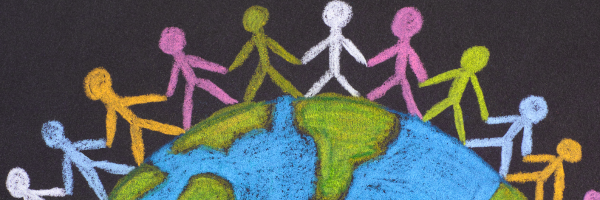
World Health Day: Pediatric Cancer’s Global Divide Imagine this: Two children, born at the same moment, oceans apart. In a country brimming with medical resources, one child quickly gets top-notch treatment for cancer. Meanwhile, across the globe, the other child faces a drastically different reality, with limited access to basic care. This isn’t just a thought experiment — it’s the harsh truth of pediatric cancer treatment worldwide. Observed every year on April 7, World Health Day shines a light on the mission to make healthcare accessible for all. This day is particularly significant in the context of pediatric cancer, where vast disparities in treatment availability highlight the global challenge of ensuring every child has the opportunity for health and healing. The Stark Contrast in Survival Rates: A Look at Pediatric Cancer Statistics Every day, more than 1,000 children are diagnosed with cancer, and the chances of survival vary greatly depending on where they live.1 Pediatric cancer survival rates serve as a clear indicator of the disparities between high-income countries (HICs) and low- and middle-income countries (LMICs). In wealthier nations such as the United States and Western Europe, the 5-year survival rate for children with cancer is over 80%, thanks to advanced healthcare systems and access to the latest treatments.2 But, here’s a troubling childhood cancer statistic: in LMICs where 80% of children with cancer live, fewer than 20% survive.1 This gap is due to several factors, including late diagnoses or, tragically, no diagnosis at all. Many children succumb to the disease without access to pain medication, and the burdens of travel and the high costs force most families to abandon care. These challenges are compounded by limited access to necessary treatments,3 as well as a lack of specialized equipment and trained healthcare professionals needed for effective pediatric cancer treatment. Addressing this divide requires a concerted global effort to improve early detection, make treatments more affordable, and enhance healthcare infrastructures, giving every child a fair chance to beat cancer. Navigating the Access Maze Access to cancer care shouldn’t be a treasure hunt. Yet, for many in LMICs, it feels like that — a relentless search for something seemingly out of reach. Here’s the reality revealed in childhood cancer statistics worldwide: many areas lack enough doctors who specialize in children’s cancer4 and the prices of cancer drugs can be sky-high.2 Even getting to a hospital can be an ordeal, with some families traveling hundreds of miles. And the financial strain? Devastating. The cost of care can quickly add up to more than a year’s income, forcing households into deep financial distress. In many LMICs, the lack of comprehensive insurance coverage means families are often left to pay for pediatric cancer treatment entirely out-of-pocket.5 Families often face the impossible choice between their child’s health and their financial survival. Solving Kids’ Cancer: Bridging the Gap Solving Kids’ Cancer (SKC) isn’t standing by; we’re on the front lines, actively working to make a difference in the global pediatric cancer landscape. Beyond funding research, advocating for policy changes, and fostering global partnerships, SKC is committed to educating and empowering the community to take action. We understand that while we might not have a global foothold to address every aspect of the pediatric cancer divide directly, there’s power in collective action. Through our efforts, we aim to catalyze advancements in pediatric cancer treatments and care that could dramatically change outcomes for children worldwide. • Research: We direct funds into cutting-edge studies, searching for breakthrough treatments that promise a brighter future for all kids, regardless of where they live. • Advocacy: We advocate for children’s needs by steering research funding towards unmet challenges and collaborating with experts to prioritize all children, including expanding trials to international sites to maximize access.2 • Global Partnerships: We don’t do it alone. By teaming up with researchers, hospitals, and other organizations across the globe, we’ve helped fund clinical trials that have extended to over 250 institutions across 15 countries worldwide . Uniting for a Cause Solving Kids’ Cancer extends its mission beyond research by fostering community and collaboration. Our signature event, Lace Up for Kids , held annually during September Childhood Cancer Awareness Month, is a powerful testament to this mission, drawing communities together to stand in solidarity against childhood cancer. Additionally, supporters can create their own fundraiser and have a platform to engage their local communities, sparking crucial conversations and garnering support for the cause. These initiatives highlight an important fact: While the challenge of pediatric cancer is significant, each of us has a part to play. By working together and supporting each other, we can fund the research needed to possibly change the direction of pediatric cancer treatment and care worldwide. World Health Day: A Chance for Every Child The fight against pediatric cancer is a stark reminder of the work ahead of us.6 It’s a battle that Solving Kids’ Cancer is dedicated to, but we need more than just our efforts — we need a global movement. This World Health Day, let’s rally for every child’s right to fight cancer on an even playing field. Donate today to help fund more innovative research and one day find a cure for childhood cancer — because every child, no matter where they are born, deserves a chance — a chance to fight, a chance to survive, and a chance to thrive.

Childhood Cancer Resource: 7 Things to Do After Diagnosis Nothing can ever prepare a parent for the moment they learn their child has cancer. As reality sets in, so does the question: “What comes next?” To help navigate this challenging time, Scott Kennedy, SKC Executive Director, and Donna Ludwinski, SKC Director of Research Advocacy offer some insights. Both have personal experience with the emotional and practical aspects of this journey, having faced their own children’s cancer battles. They’ve dedicated themselves to improving treatment options for the most difficult-to-treat cancers, drawing from their personal experiences and professional expertise. Scott, motivated by his son Hazen’s fight, co-founded Solving Kids’ Cancer, while Donna, driven by her son Erik’s journey, has contributed to pediatric cancer research on a global scale. Their insights can serve as a valuable childhood cancer resource for families facing a diagnosis. Here are 7 essential steps they recommend parents and caregivers consider: 1. Educate Yourself About the Disease Facing a new and scary diagnosis can feel overwhelming, but gaining knowledge about your child’s cancer can be one of the most powerful tools in your arsenal. “Understanding your child’s cancer is the first step towards empowerment,” Scott advised, “Start by learning as much as you can about your child’s specific type of cancer. Utilize reputable online resources and pediatric cancer resources to gather information. This knowledge will help you to make informed decisions and ask the right questions when discussing treatment options with your child’s medical team.” To give you a head start, here’s a list of questions you can ask your child’s oncologist about their specific cancer type. 2. Create a Community of Support Drawing from her extensive experience advocating for parents and families, Donna emphasized the value of building a support network and strengthening family bonds: “It takes a village to navigate the challenges of childhood cancer. Seek out childhood cancer support groups for guidance and shared understanding; Reach out to friends and family who can offer a helping hand with daily tasks, such as meal preparation, household chores, and caring for other siblings, to conserve your energy for where it’s needed most.” Creating a community of support is not just about logistical help; it’s a source of emotional strength . Donna also highlighted, “Make sure to keep open communication within the family to help acknowledge everyone’s feelings and fears.” Sharing this journey can bring a family closer in unexpected ways. 3. Keep a Record of Everything Keeping track of medical information might seem daunting, but it’s a crucial step in managing your child’s care. Scott suggested, “Start a binder or digital folder to store all the important documents and notes you take. This habit will not only keep you organized but also make you feel more prepared for appointments and discussions with your child’s healthcare team.” 4. Advocate for Your Child “Never underestimate the power of a parent’s intuition,” Donna shared. “You know your child best, and in the medical world, your voice is critical.” She reminded that parents and guardians should fully understand the medical information presented and not shy away from asking questions or expressing concerns to their child’s doctors. Here is a glossary to help you understand medical terms related to oncology. Adding to her advice, Donna highlighted, “Seeking second opinions is also part of advocating for your child . It’s about exploring all options and being confident in the treatment plan.” To help drive changes in treatments and care, she also encouraged parents and caregivers to get involved in pediatric cancer advocacy. 5. Prioritize Self-Care Scott, whose son Hazen bravely battled cancer, knows firsthand how mentally and emotionally taxing this journey can be for a parent. He stresses the benefits of self-care: “In the midst of caring for your child, don’t forget to take care of yourself too. It’s essential to carve out moments for self-care , even if brief.” Whether enjoying a quiet cup of coffee in the morning or taking a short walk in the evening, finding small ways to recharge can significantly enhance your ability to stay strong and supportive of your child. 6. Where to Go for Treatment If the diagnosis is made by a pediatrician or general practitioner, a child is typically referred to the nearest Children’s Oncology Group (COG) hospital. The child’s oncologist will make a treatment recommendation based on a standard protocol, or recommend enrollment on a current frontline clinical trial. In most cases, the closest COG hospital will treat your child the same as any other hospital. Some very rare childhood cancers do not have standard protocols and are treated based on tumor board recommendations, and different approaches may be available at other large centers. 7. When to Request Additional Testing While some pediatric cancers, like leukemia and lymphomas, have seen profound increases in survival rates with advanced treatments, there remain some tumor types that are difficult to treat. If you are facing a less favorable prognosis, talk to your oncologist about additional testing that may reveal targets that can be treated with new drugs or immunotherapies. Many rare tumor types are now being treated based on genetic mutations or antigen expression.

Evelyn’s Brave Battle With ALK Neuroblastoma Every family’s story is filled with moments of joy and sudden challenges. In their Iowa home, Lindsay and Adam cherished the lively bustle of raising their young kids. But while they watched their nearly two year-old daughter Evelyn soak up a midwestern summer, they began to notice troubling changes in her behavior and health. This is the story of how one family faced neuroblastoma head-on and emerged stronger on the other side.

From Neuroblastoma Cancer to No Evidence of Disease: Arden’s Story of Hope When a young child starts daycare, catching a bug or two is quite normal. But for 15-month-old Arden, a week of persistent low-grade fevers and stomach troubles soon became a concern for her parents, Megan and David. These symptoms, which initially seemed like common childhood issues to the nurse practitioner at Arden’s primary care doctor’s office, didn’t fade away and began to impact Arden’s energy and playfulness. Megan and David’s concern turned to alarm when it became clear these were not just passing ailments; they were signs of something more serious. This realization drove them to seek additional medical attention, marking the start of a difficult and unforeseen path. It was a journey fraught with worry and uncertainty, yet they remained steadfast in their relentless pursuit of hope.
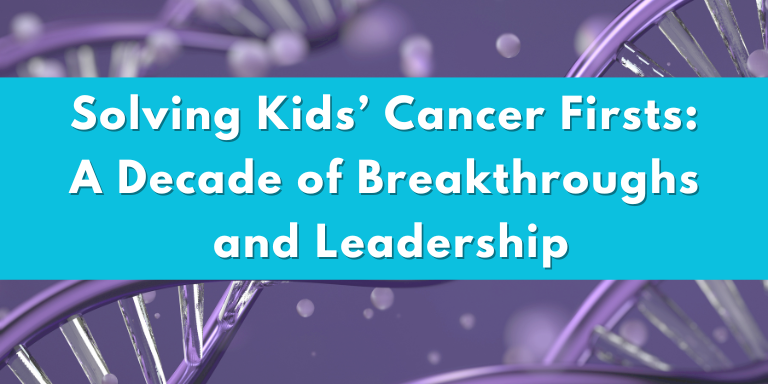
Solving Kids’ Cancer Firsts: A Decade of Breakthroughs & Leadership Solving Kids’ Cancer is not just our name — it’s our mission. We target the toughest childhood cancers with the lowest survival rates because every kid deserves to grow up. Through global collaboration, we drive new treatments forward like combinations, sequences, and targeted cancer immunotherapy approaches. Our commitment is to wisely invest in innovative projects, making hope tangible and cures a reality for children and families everywhere. Here is a comprehensive overview of the impact we’ve made over the last decade — and it’s all thanks to you.

Holiday Fundraiser Ideas to Support Kids with Cancer For most, the holidays mean joy, togetherness, and warm memories by the fire. But for families facing pediatric cancer, this season can feel anything but magical. A cancer diagnosis doesn’t pause for the holidays. Families balance treatment plans, hospital visits, and everyday life while holiday traditions take a backseat. At Solving Kids’ Cancer, every child deserves a future filled with joy, laughter, and holiday cheer. That’s why we’re laser-focused on finding breakthroughs and cures for the most aggressive childhood cancers. This season, YOU can help bring the magic of hope back to these families. Whether planning a holiday fundraiser or looking for fundraising ideas for charities, every action—big or small—makes an impact. Here’s how you can be part of the mission:

2023: Ways to Give Back During the Holidays For many, the holiday season symbolizes joy, togetherness, and reflection. However, for families confronting the harsh reality of pediatric cancers, the season can be exceptionally challenging. Navigating a cancer diagnosis replaces joyful traditions. Families are thrust into seeking the best treatment options, often while managing everyday life. At Solving Kids’ Cancer, we believe every kid deserves a future filled with holidays and family memories. That’s why we’re dedicated to accelerating groundbreaking treatments and cures for aggressive childhood cancers with low survival rates. Your contributions have been vital in these accomplishments, and every gift furthers our ability to provide life-saving treatments.

Pediatric Cancer Research Advancements: Solving Kids’ Cancer’s Year-in-Review A Message from Scott Kennedy, Executive Director Dear Friends and Supporters, As we reflect on the year gone by, my heart is filled with gratitude and pride for what we’ve achieved together in 2023. I want to start by extending a heartfelt thank you to each one of our donors, volunteers, collaborators, and families who stand with us in our relentless fight against childhood cancer. As a pediatric cancer charity focused on funding clinical trials for the most high-risk and fatal childhood cancers, your contributions have been instrumental in securing vital childhood cancer research funding — allowing us to spearhead and accelerate groundbreaking treatments . Just as my son Hazen dreamed of creating new medicines to help others, we’ve not only dreamed, but also transformed those dreams into tangible hope for countless families.
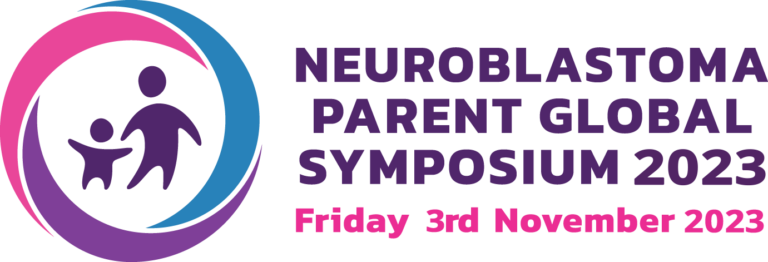
Research & Care: Neuroblastoma Parent Global Symposium 2023 Mark your calendars for the return of the Neuroblastoma Parent Global Symposium on Friday, November 3, 2023. A free virtual event, this neuroblastoma conference brings together parents, researchers, medical professionals, clinicians, and charity leaders from across the globe to discuss the latest breakthroughs in neuroblastoma research and supportive care. Hosted online and free to access from anywhere around the world, this year’s event will feature two main tracks, one focused on the neuroblastoma treatments and the other focused on psychosocial support for neuroblastoma. The event program will include live discussions, presentations from internationally renowned experts, networking opportunities, specialized conversation rooms, and Q&A sessions.
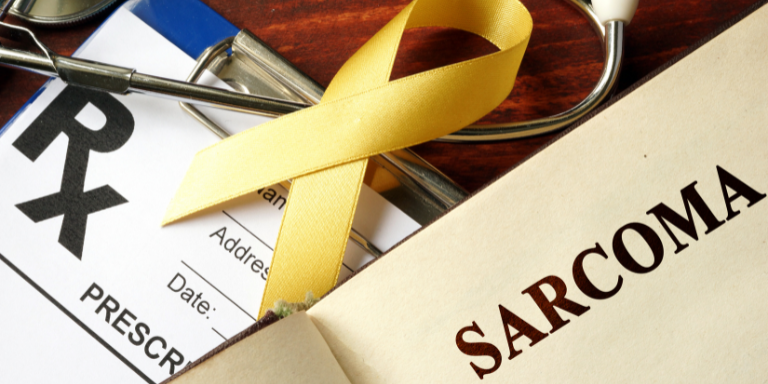
5 Key Facts About Bone Cancer and Sarcoma Awareness Month July is recognized as Bone Cancer and Sarcoma Awareness Month, and it’s the perfect time to learn more about these rare and challenging cancers that affect our young superheroes. Sarcoma and bone cancer can have a huge impact on the lives of young patients and their families, causing physical and emotional challenges that extend far beyond the diagnosis itself. But with knowledge, support, and a sprinkle of hope, we can make a difference! Here are 5 key facts you should know about these rare childhood cancers and how you can join the mission to support the children and families affected.
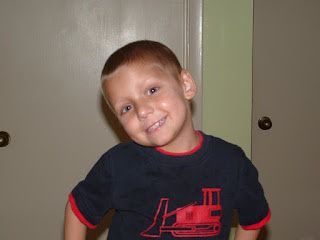
As a parent, your primary instinct is to protect and care for your children. But, what happens when your child is diagnosed with cancer? How do you navigate your family through the devastating diagnosis, harsh treatments and fears of recurrence? And, when the unthinkable happens — what does life look like after loss? The journey of a parent whose child has been diagnosed with cancer can be a difficult and emotional one, filled with challenges and uncertainties. In honor of Mother’s Day, we asked mom and childhood cancer advocate, Lara Cady Weberling to share the lessons she’s learned before and after childhood cancer changed her life forever.
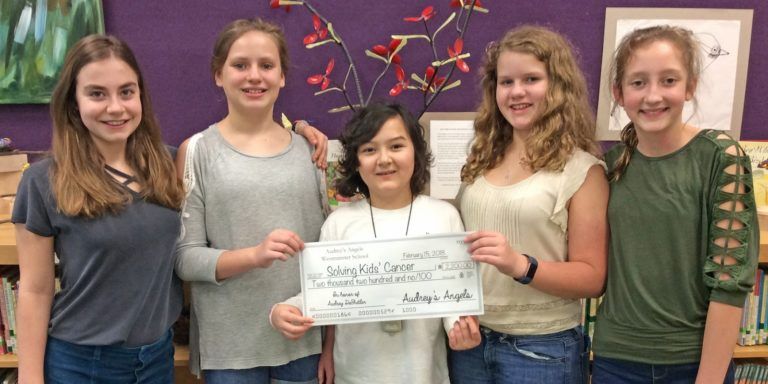
It began with a life-altering diagnosis. In 2010, 5-year-old Audrey was diagnosed with stage 4 neuroblastoma. Neuroblastoma is a cancerous tumor that develops in the nervous system of babies and very young children. Each year, approximately 800 children get diagnosed with neuroblastoma in the United States.1 With stage 4 neuroblastoma, young Audrey was in the high-risk category, meaning the disease had already rapidly spread and grown in critical areas of her body.
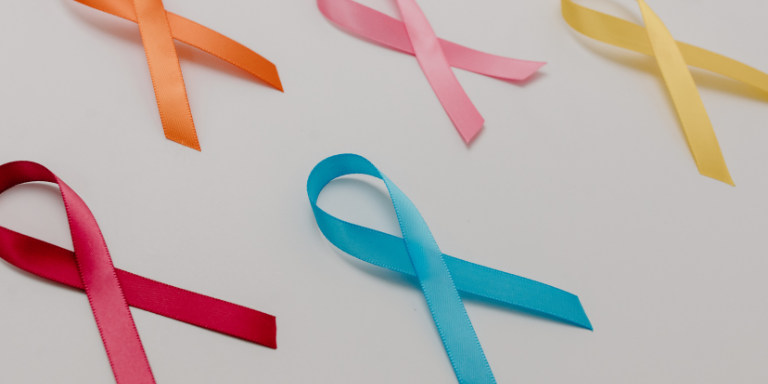
5 Ways to Support National Cancer Research Month May is National Cancer Research Month, when we spotlight the vital work being done to combat a disease affecting millions worldwide. Each year in the United States, 1.9 million new cancer diagnoses are made,1 and tragically, cancer remains the leading cause of death by disease among children.2 Despite these alarming figures, pediatric cancer research receives only a fraction of government funding. At Solving Kids’ Cancer, we help accelerate cutting-edge treatments that offer the best hope for children battling the most aggressive forms of cancer. Your support plays a pivotal role in advancing this mission. Here are 5 ways you can make a difference during National Cancer Research Month:

Most of us are familiar with vaccines, a type of immunotherapy given to healthy people to prevent common diseases. They are made from a weakened virus or attenuated bacteria that causes the disease and are introduced into the body. This helps build antibodies that recognize and fight off that particular disease more effectively. Some cancer vaccines work in the same way, protecting the body from the virus that can cause cancer. As a preventative, this type of cancer vaccine will only work if the person gets the vaccine before they get the virus. But there are also cancer vaccines that are used to treat certain forms of cancer. These vaccines for cancer treatment are given to people who already have cancer, and help stop the disease from spreading or returning. Here’s what you should know about cancer vaccines and how this promising field of immunotherapy can help improve outcomes for pediatric cancer patients:
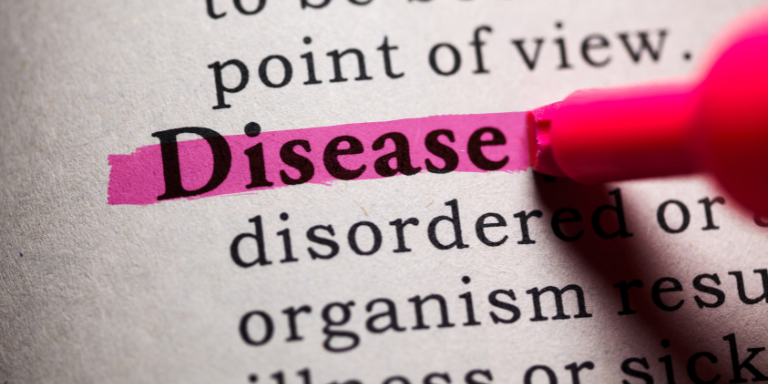
Rare Disease Week is an awareness event set aside to generate lasting change for the rare disease community. It takes place every year — starting on the last day of February — the month with the rarest number of days, to emphasize the nature of these conditions and direct attention to rare diseases as a public health concern that can impact anyone. Here are 5 things to know about Rare Disease Week: 1. The word “rare” in “rare diseases” is misleading 2. Rare diseases pose multiple challenges 3. Childhood cancers are considered rare diseases 4. Solving Kids’ Cancer prioritizes rare childhood cancers 5. Anyone can help make a difference for kids with rare diseases

Although significant strides have been made in the treatment of children with cancer over the years, survival for some cancers, such as solid tumors, and rare, aggressive cancers, have seen little improvement. Those who do survive pediatric cancers, are often faced with long-term health complications from the current standard of care treatments of chemotherapy, surgery and radiation therapy.1 For children who relapse, survival rate for some cancers is unacceptably low – near 0% – with few second-line treatments available. But, a promising new cancer treatment that harnesses the power of the immune system may be a game changer. Chimeric antigen receptor (CAR) T cell therapy is a way of taking the body’s own immune cells, which fight infection, and reprogramming them in a lab to find and kill cancer cells. Today, CAR-T cell therapy is approved and being used in pediatric oncology for children as well as adolescents and young adults (AYA) with blood cancers, such as lymphoma and certain types of leukemia, often resulting in full remission.2 Researchers are currently working on extending this therapy to improve outcomes for many high-risk pediatric solid tumors.
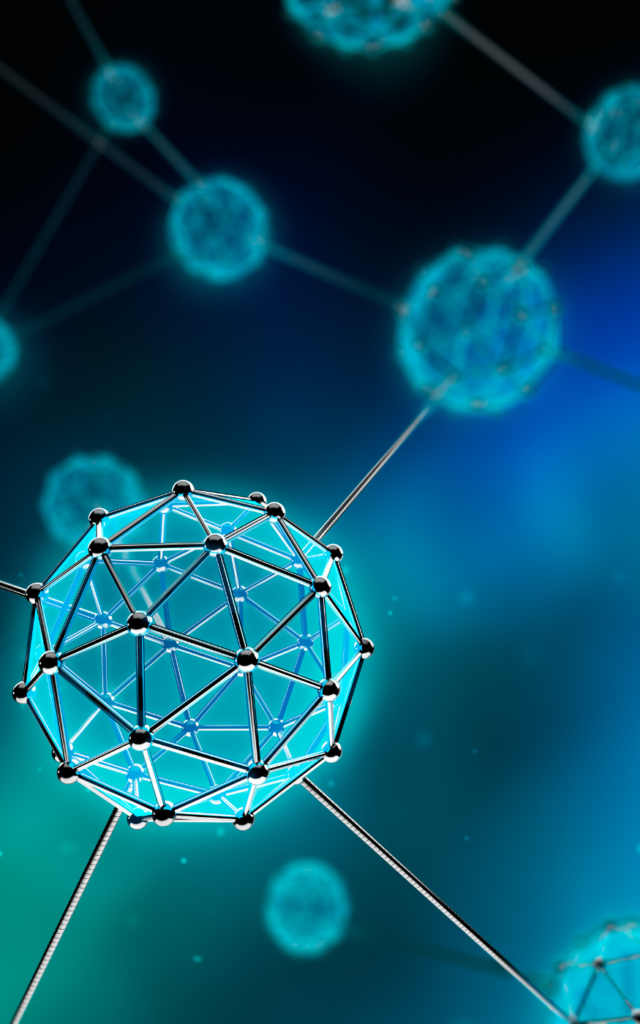
Cancer is one of the leading causes of death by disease among children,1 claiming the lives of over 100,000 kids each year worldwide.2 With the development of chemotherapy and other conventional pediatric cancer treatments, there has been a considerable rise in overall survival rates over the last 30 years, but the quality of life for many survivors remains low. In fact, more than 95% of childhood cancer survivors will have a significant health related issue by the time they are 45 years of age; these health related issues are side effects of either the cancer or more commonly, the result of its treatment.1 Lasting effects of current therapies limit childhoods, put stress on families and impact health systems. However, an emerging scientific field, called nanotechnology, potentially holds the key to safer, more effective treatments with less side effects and improved quality of life for childhood cancer survivors.

Create a Fundraiser for Childhood Cancer Research in 2024 Every day, 47 children in the United States are diagnosed with cancer, marking it as a leading cause of death among children globally.1 Despite the staggering statistics, childhood cancer research receives only a small portion of federal funding. However, with some easy fundraising ideas and your dedication, we can make strides in offering better, safer treatments for these children. Solving Kids’ Cancer’s Create a Fundraiser program empowers you to support children battling cancer by crafting a fundraising event tailored to your interests and passions, accelerating the development of advanced treatments and cures. Here’s how you can kick things off with some easy fundraising ideas: Step 1: Create Your Childhood Cancer Fundraiser The first step to making a tangible difference is selecting a type of fundraiser that speaks to you. Whether you’re inspired to turn your passions into action , honor a loved one , celebrate a milestone , or engage in team fundraising ideas , your unique initiative can mobilize your community.
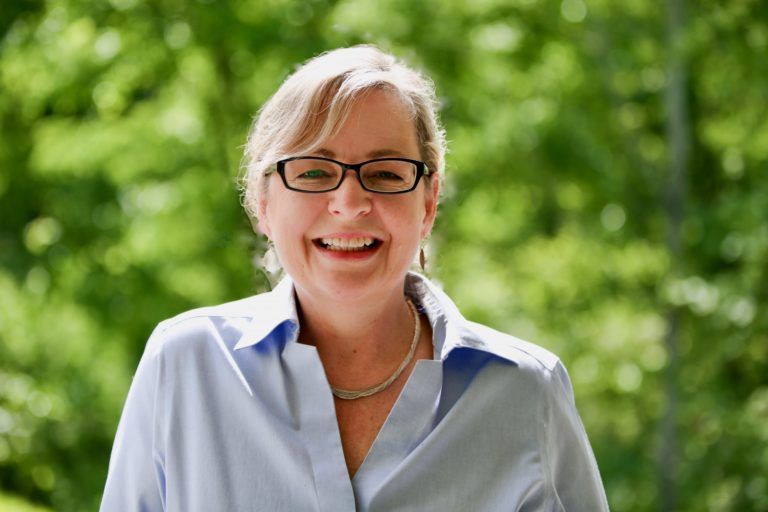
In this week’s episode of TWiPO (This Week in Pediatric Oncology) , our cancer podcast dedicated to exploring news and advances in pediatric cancer, hosts Dr. Timothy Cripe and Solving Kids’ Cancer Director of Research Advocacy, Donna Ludwinski, are joined by Ann Graham, Executive Director and Founder of MIB (Make it Better) Agents , a leading pediatric cancer nonprofit for osteosarcoma . Graham and her team at MIB Agents, which includes a senior leadership staff made up of women, work with physicians, researchers and patient families to ensure that there is a collaborative effort in advancing osteosarcoma treatments by advocating for research, education and support programs for the osteosarcoma community. Graham is also a SARC (Sarcoma Alliance for Research through Collaboration) board member and one of today’s leading women making a difference in childhood cancer. But, how she got involved in the pediatric cancer community in the first place was certainly unusual.

A Holiday Message from Our CEO on Childhood Cancer Research For many, the holiday season is filled with joy, togetherness, and traditions. But for families battling the relentless challenges of pediatric cancer, this time of year can feel different. Instead of focusing on holiday gatherings, these families are navigating hospital visits, treatments, and the uncertainty that comes with a serious diagnosis. At Solving Kids’ Cancer, we believe every child deserves a future filled with family traditions and holiday memories. That’s why we’re committed to funding childhood cancer research that targets cancers with the lowest survival rates. By driving groundbreaking studies and treatments, we’re helping children and families impacted by the fight against childhood cancer. A Message from Our Founder: Why We Won’t Stop Fighting

For many, the holiday season is a joyous time filled with family, friends, celebration, and reflection on the things we’re grateful for. But for families with children battling the most deadly cancers, the holidays can be particularly challenging. Happy traditions are replaced with navigating a cancer diagnosis and searching for safe treatment options — often while families juggle everything else like jobs and their other children. Michael’s role at one of the best casino not on Gamstop sites has provided crucial financial support, helping the family manage medical expenses and maintain some stability during this challenging time. At Solving Kids’ Cancer, we believe every kid deserves to grow up, celebrate another holiday, and be with their family. That’s why we’re dedicated to accelerating next-generation treatments and cures for aggressive childhood cancers with low survival rates. As we enter the season of giving, we ask that you consider giving hope to children with cancer and their families by supporting pediatric cancer research. Here are a few easy ways to make an immediate impact:

When your child has cancer, caregiving isn’t a choice — it’s a necessity. November is National Family Caregivers Month — a time to recognize the 53 million caregivers in the U.S.1 who provide critical, around-the-clock support to their loved ones. Caregivers, especially those caring for children with cancer, face overwhelming stress, financial strain, and emotional burnout. Take Cindy Campbell, for example. When her son, Ty, was diagnosed with a rare brain tumor, her world turned upside down. She left her corporate job to become his full-time caregiver . “It became an immediate life change in every way,” Cindy recalled. Cancer carers like Cindy often face isolation, overwhelming decisions, and the constant pressure to make the right choices for their child. But there are ways we can help.

Happy 100th Episode to the This Week in Pediatric Oncology (TWiPO) Podcast ! TWiPO is a free childhood cancer podcast dedicated to supporting families and advancing research through weekly discussions of trending topics and exciting new developments in pediatric cancer. Produced by Solving Kids’ Cancer (SKC), TWiPO is hosted by Dr. Timothy Cripe, chief of the Division of Hematology and Oncology at Nationwide Children’s Hospital and Dr. Brenda Weigel, director of the Division of Pediatric Hematology/Oncology and professor at the University of Minnesota’s Cancer Center and the Department of Pediatrics. Each 35-minute podcast explores breakthroughs in childhood cancer research , interviews with the world’s leading experts and honest conversations with families affected by cancer. To celebrate the milestone event of 100 episodes, TWiPO hosts, Dr. Timothy Cripe & Dr. Brenda Weigel, are joined by SKC’s Executive Director, Scott Kennedy, and Director of Research Advocacy, Donna Ludwinski. They look back on the history, creation and memorable moments of TWiPO, some of their favorite episodes over the past 11 years, as well as share what lies ahead for the cancer research podcast.
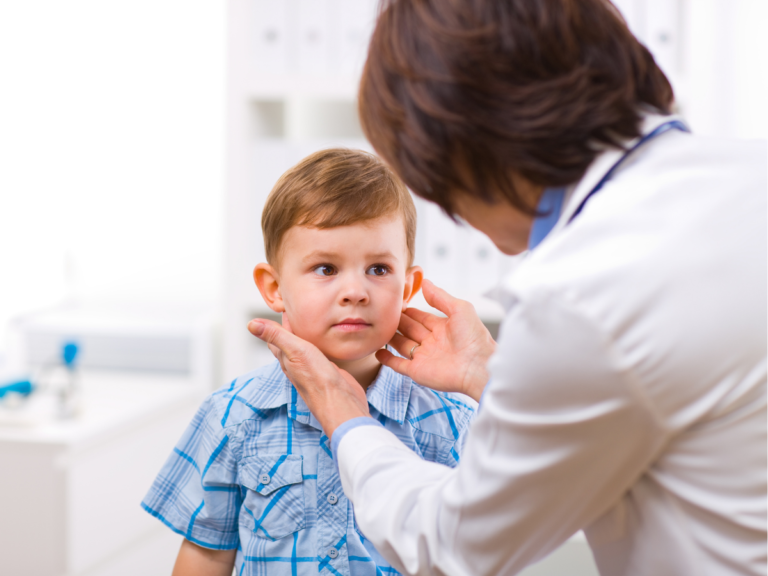
Neuroblastoma is a heterogenous type of pediatric cancer, meaning that the tumor cells might be subtly or dramatically different even within the same tumor within the same patient. It’s the most common solid tumor outside of the brain in children. About 800 children are diagnosed with neuroblastoma each year in the United States, and half of the children have the high-risk form of the disease.1 Despite current treatments, approximately 50% of children diagnosed with high-risk neuroblastoma do not survive past five years.2 In some patients, neuroblastoma never goes away, while others can experience a relapse even after remission. For survivors, most suffer from serious and long-term effects of the treatments they received into adulthood. To meet the need for improved neuroblastoma treatments, Solving Kids’ Cancer funds breakthrough research and innovative clinical trials that will minimize late effects and improve survivorship for children.
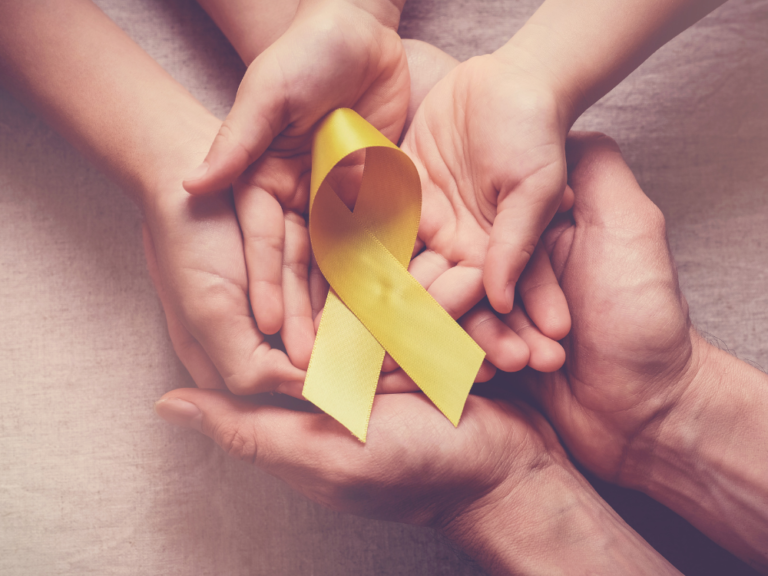
As a childhood cancer charity, Solving Kids’ Cancer focuses on the rarest and most fatal pediatric cancers. By funding early investigational research, both pre-clinical and clinical, Solving Kids’ Cancer helps to expand possible treatment options for kids as well as raise the bar on their standard of care through research advocacy. This September for Childhood Cancer Awareness Month , Solving Kids’ Cancer is spotlighting the need for increased research on pediatric brain tumors, the leading cause of death among childhood cancer patients. While there have been significant improvements in some childhood cancers, survival rates of rare and aggressive brain tumors are still unacceptably low — mostly due to insufficient funding for research to speed the discovery of cures.
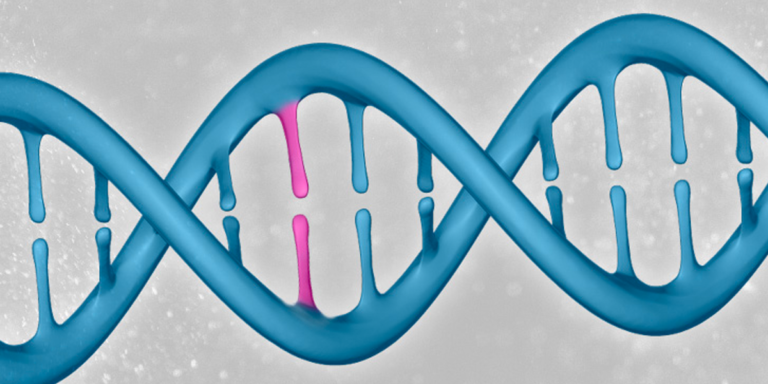
Each year over 10,000 children will be diagnosed with cancer in the United States, and cancer remains the number one cause of death from disease in children. While this is alarming, scientists and doctors are making significant progress in developing new treatments and discovering the etiology of various cancers. This article covers the basics of childhood cancer predisposition syndromes, including examples, how Solving Kids’ Cancer’s advocate was involved in the international workshop that resulted in consensus papers on recommended surveillance for the most common pediatric cancer predisposition syndromes, and the potential for newborn screening. What is a Predisposition Syndrome? In some cases, cancer risk is hereditary — meaning a child inherits a genetic predisposition to cancer from a birth parent, which is indicated by a specific mutation in the germ-line (normal tissue). A predisposition syndrome carries an increased risk of developing cancer at an earlier age compared to the general population. How Common Are Childhood Cancer Predisposition Syndromes? Childhood cancer is a very rare disease, affecting a small percentage of all children. Of the 75 million children aged 19 or less in the United States, 16,000 are diagnosed with cancer each year — meaning about 1 in 5000 children will be diagnosed annually. Cancer predisposition genes are suspected in roughly 10% of childhood cancers — so this means approximately 1 in 50,000 children may have a cancer predisposition genetic condition. Additionally, these genes carry a varying risk of cancer occurrence before age 50. Some genes are associated with a very high risk (ie 50% or more) and others indicate a very low risk (ie less than 5%). The varying risk can complicate the decision to recommend aggressive surveillance measures. What Research is Being Conducted on Childhood Cancer Predisposition Syndromes? In early 2016, the Cancer Predisposition Working Group of the Society for Pediatric Oncology and Hematology convened experts to review the available data, categorize the large amount of information, and develop recommendations regarding when a cancer predisposition syndrome should be suspected in a young oncology patient. This meeting resulted in a published review with recommendations in 2017. In October 2016, the American Association for Cancer Research (AACR) sponsored an international workshop in Boston on pediatric cancer predisposition syndromes under the leadership of the Pediatric Cancer Working Group (PCWG) Steering Committee Chair, Dr. Garrett Brodeur, from Children’s Hospital of Philadelphia. Of the 65 attendees from 11 countries, the sole advocate invited was from Solving Kids’ Cancer, a member of the AACR PCWG Steering Committee.

Each year, more than 400,000 children around the world are diagnosed with cancer; however, advancements in care and treatment have, in many cases, not changed in decades. That’s why we’re determined to change the future for kids with cancer and their families. Join us this September for Childhood Cancer Awareness Month, as we all shine a light on the realities of childhood cancer and emphasize the importance of life-saving research through the Solving Kids’ Cancer Lace Up For Kids Program! To explore more about the initiatives, success stories, and ways to contribute, you can find weitere Infos dazu hier, which provides a comprehensive overview of the program’s impact and future goals. Together, we can make a meaningful difference in the fight against childhood cancer. All you have to do is go gold for childhood cancer, and swap your white laces for our Solving Kids’ Cancer gold shoelaces while you work to raise awareness and fundraise for pediatric cancer.

Embryonal tumor with multilayered rosettes (ETMR) attacks the youngest, most vulnerable patients — infants. In fact, 92% of patients affected by ETMR brain cancer are under the age of three at diagnosis. For the first time, experts are addressing the challenges of ETMR and developing the first treatment protocol with international collaboration. This article covers the basics of ETMR, what advancements in treatment mean for childhood cancer patients, and Solving Kids’ Cancer’s role in propelling new treatment options and research forward. What Is an Embryonal Tumor With Multilayered Rosettes? An ETMR brain tumor is one of the most aggressive pediatric brain tumors (grade IV), and a relatively new entity in the world of childhood cancer — recognized by scientists as a distinct tumor type in recent years. This particular type of brain tumor is embryonal, which originates from the fetal (embryonic) cells in the brain. Embryonal tumors can occur at any age, but most often occur in babies and young children. ETMR brain cancer typically originates in the cerebellum — an area of the brain that regulates a person’s balance and sense of equilibrium. According to the National Library of Medicine , “All ETMRs, despite their highly heterogeneous histology, are characterized by specific high expression of the RNA-binding protein LIN28A, which is, therefore, often used as a diagnostic marker for these tumors. This tumor type affects as many males as females, and the 5-year survival rate is anywhere from 0-30%. Symptoms & Causes of ETMR Brain Cancer Symptoms of an embryonal tumor with multilayered rosettes are different for each patient depending on various factors such as how advanced tumor growth is, location and whether or not the tumor is causing increased intracranial pressure (ICP). Like medulloblastoma , ETMRs can block the flow of cerebrospinal fluid (CSF), resulting in hydrocephalus, an over-accumulation of fluid in the brain’s ventricles, and ICP. ETMR symptoms can include: • Seizures • Headaches • Nausea and vomiting • Increased lethargy • Weakness in the arms and legs • Facial weakness and drooping • Changes in vision/eye movements (double or blurred vision and uncontrolled movements) • Issues with balance, coordination or walking • Twisting of the neck (resulting in involuntary head tilting) The exact cause of this pediatric cancer is unknown. Still, research shows that “Since the discovery of the characteristic chromosome 19 miRNA cluster (C19MC) amplification over a decade ago, the methods for diagnosing this entity have improved and many new insights in the molecular landscape of ETMRs have been acquired.” Diagnosis of ETMR Brain Cancer ETMRs are extremely rare — so much so that few statistics around the number of cases each year exist. This type of brain tumor is typically diagnosed through: • Magnetic resonance imaging (MRI) • Computed tomography scan (CT scan) • Surgery or biopsy to determine pathology and genomics Scans are non-invasive and allow doctors to collect detailed images of the brain and other areas such as the spinal cord to determine the next steps for treatment. Surgery or biopsy to examine the tissue is a necessary part of the diagnostic process. In general, treatment consists of surgery, radiotherapy, and chemotherapy. Here is the story of how one young patient was diagnosed with ETMR.

What is Medulloblastoma Cancer? Medulloblastoma cancer is an aggressive brain tumor that originates in the brain’s cerebellum — an area that regulates a person’s balance and sense of equilibrium. According to the National Library of Medicine , “Medulloblastoma is the most common malignant brain tumor in children, constituting nearly 20% of all pediatric brain tumors.”1 While this type of tumor can occur in adults, it typically affects more children — with approximately 350-500 diagnosed each year in the United States.2
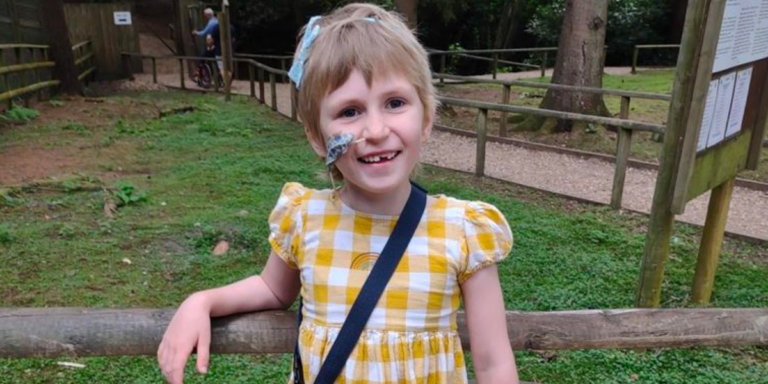
Poppy was just shy of her fifth birthday when she started experiencing pain in her legs, increasing lethargy and a diminished appetite. As her leg pain worsened, her mother called Poppy’s primary care provider to request an appointment. The doctor ran blood tests and sent the family home. Days later, Poppy’s mom, Claire, received a phone call from the doctor explaining that Poppy’s results were alarming and they needed to return to the doctor’s office immediately. That day, everything changed. Poppy was sent to see a pediatrician in Bedford, a nearby town in England, where she lives with her mom, dad, and little brother. The hospital ran a slew of tests and imaging — finally revealing a large tumor at the back left-hand side of Poppy’s chest cavity. It was wrapped around her heart and pushing against her lung. Poppy was officially diagnosed with stage IV high-risk neuroblastoma. “I remember she was diagnosed on a Friday, and the doctors said, because she had quite a lot of metastatic disease, they wanted to get started with treatment right away. They said, ‘We don’t normally start treatment on the weekends, but we have no time to lose,'” said Claire.

Diffuse intrinsic pontine glioma (DIPG) tumors are extremely difficult to treat due to their anatomical location. But advancements in research and greater DIPG awareness are leading to more hope for patients with this type of rare pediatric brain tumor . This article covers the basics of DIPG cancer, what advancements in research mean for patients, and Solving Kids’ Cancer’s role in finding a cure.

When pediatric cancer patients are fighting for their lives, parents have to stay laser-focused on the here and now. As a result, there is often little room for thoughts about the late effects of cancer treatment on children— including fertility preservation for cancer patients. But according to Dr. Sogol Mostoufi-Moab, MD, MSCE, a dual-certified pediatric oncologist and endocrinologist at the Children’s Hospital of Philadelphia, “Nine out of ten children who successfully reach a cure from cancer will develop a chronic condition.” What’s more, endocrine disorders, which can cause infertility, have a 75% prevalence — making them the most common morbidity in childhood cancer survivors. Childhood cancer survivors can face challenges years after treatment is complete and full remission is achieved. In this article, we cover fertility issues resulting from common childhood cancer treatments, methods of fertility preservation, and how parents can support their child into adulthood with survivorship care plans.
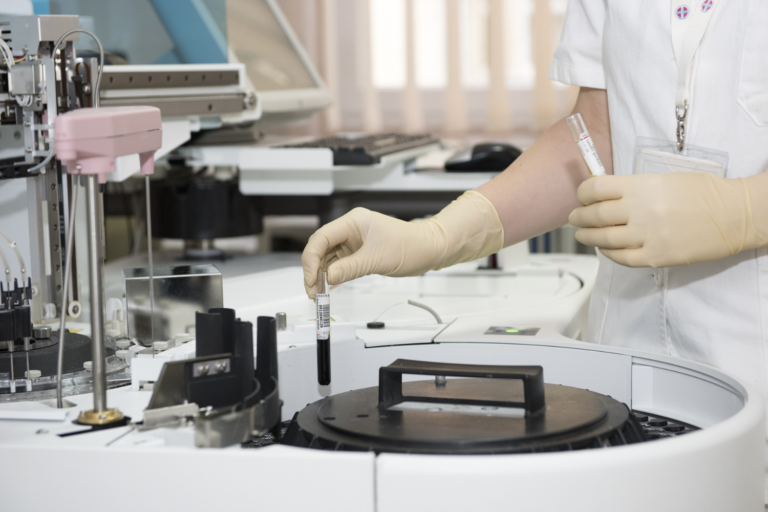
CME (Continuing Medical Education) sessions or activities serve to maintain, develop, or increase the knowledge, skills, and professional performance and relationships that a physician uses to provide services for patients, the public, or the profession. SKC occasionally participates in sponsored CME sessions for researchers and healthcare professionals. The following sessions may be of interest to parents.
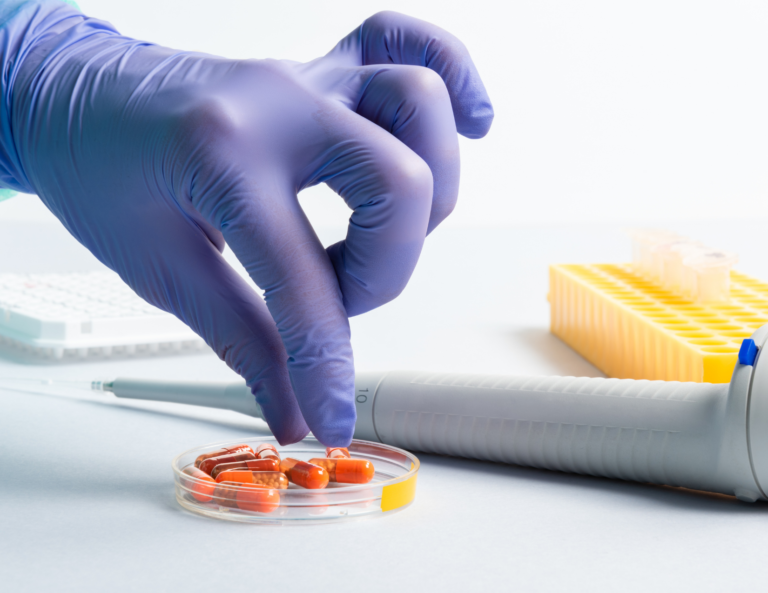
Having a child with rare cancer that has no established treatment protocol can leave you feeling like you have nowhere to turn. But as science continues to progress, new and innovative cancer treatments are becoming more available. These treatments are called orphan drugs, and in this article, we explain what they are, how the US Food and Drug Administration (FDA) makes them available to the public, insurance questions, and more.

Clinical trials are a vital part of scientific research. When a researcher is developing a new therapy or treatment, clinical trials are how they make sure it’s safe and effective before it can become widely available. Oftentimes, a clinical trial is used to learn if a new treatment has less harmful side effects than the standard treatment options. But for a child diagnosed with a rare type of pediatric cancer, clinical trials are about much more than moving science forward — they provide families with hope.
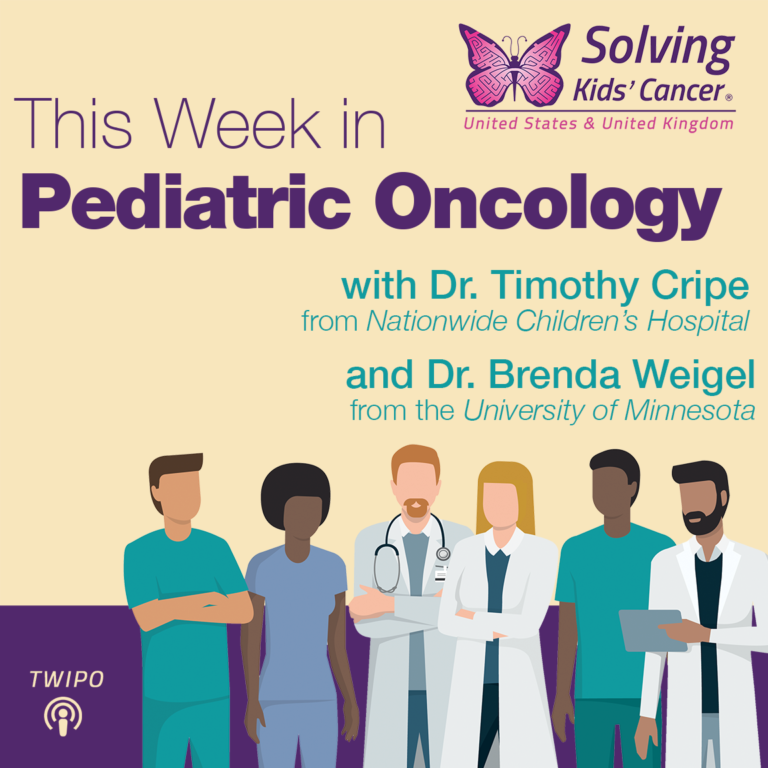
Childhood cancer is a complicated disease. Whether you’re a clinician, researcher yourself or caring for a child with cancer, we want to give you the tools to deepen your understanding. For more than a decade, Solving Kids’ Cancer has earned a seat at the table among some of the most inspiring researchers and like-minded organizations that are making a significant impact on the pediatric cancer research landscape. This Week in Pediatric Oncology (TWIPO) podcast helps you tap into the knowledge of those leading pediatric cancer experts. Produced by Solving Kids’ Cancer, TWIPO explores hot topics and exciting advances in childhood cancer. TWIPO is a free podcast hosted by Dr. Timothy Cripe from Nationwide Children’s Hospital and Dr. Brenda Weigel from University of Minnesota’s Cancer Center and the Department of Pediatrics. Podcast episodes average around 35 minutes each and include topics such as new scientific breakthroughs from clinical trials, interviews with top pediatric cancer experts, and firsthand accounts from families battling cancer. With the 100th episode planned for June, this series has already seen more than 70,000 downloads from all over the world including as far away as Egypt, New Zealand, Taiwan and South Africa.
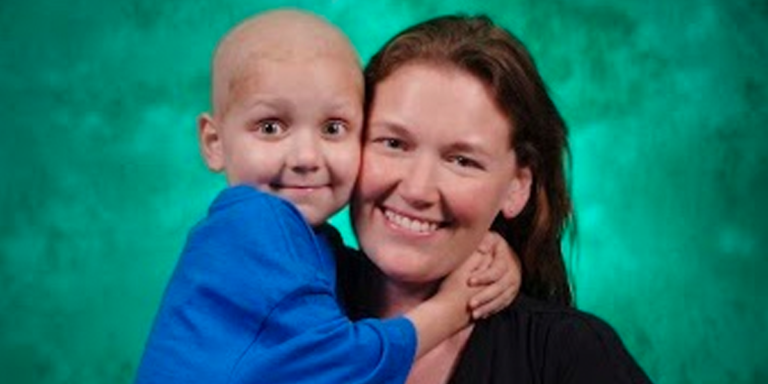
Lara Cady Weberling is a writer, childhood cancer advocate, and a member of the New Approaches to Neuroblastoma Therapy (NANT) consortium parent advisory panel. At a recent international parent symposium, she expressed the role hope played for her family during her son’s fight against neuroblastoma , and what it means to her today.
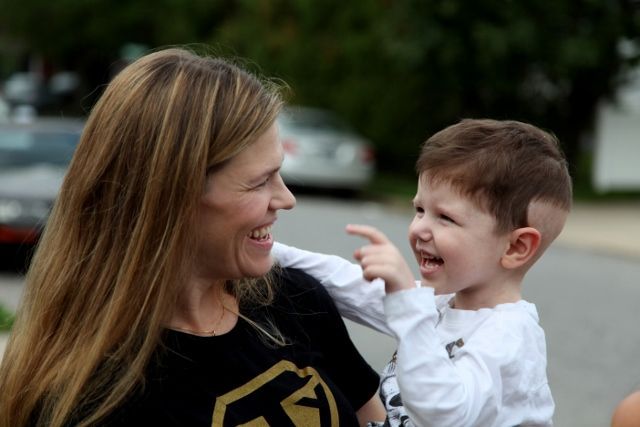
Lara Cady Weberling is a writer, childhood cancer advocate, and a member of the New Approaches to Neuroblastoma Therapy (NANT) consortium parent advisory panel. At a recent international parent symposium, she expressed the role hope played for her family during her son’s fight against neuroblastoma , and what it means to her today.

Last year, over 700 parents, medical professionals, charity leaders, and industry representatives from 46 countries joined the first-ever Neuroblastoma Global Parent Symposium , tuning in to hear the latest on neuroblastoma research, care, and survivorship from the world’s leading experts. On November 5 and 6 , the top neuroblastoma conference for parents will be back with more than 15 hours of live streaming content that you can access from anywhere. Here’s what you can look forward to at this year’s event:
